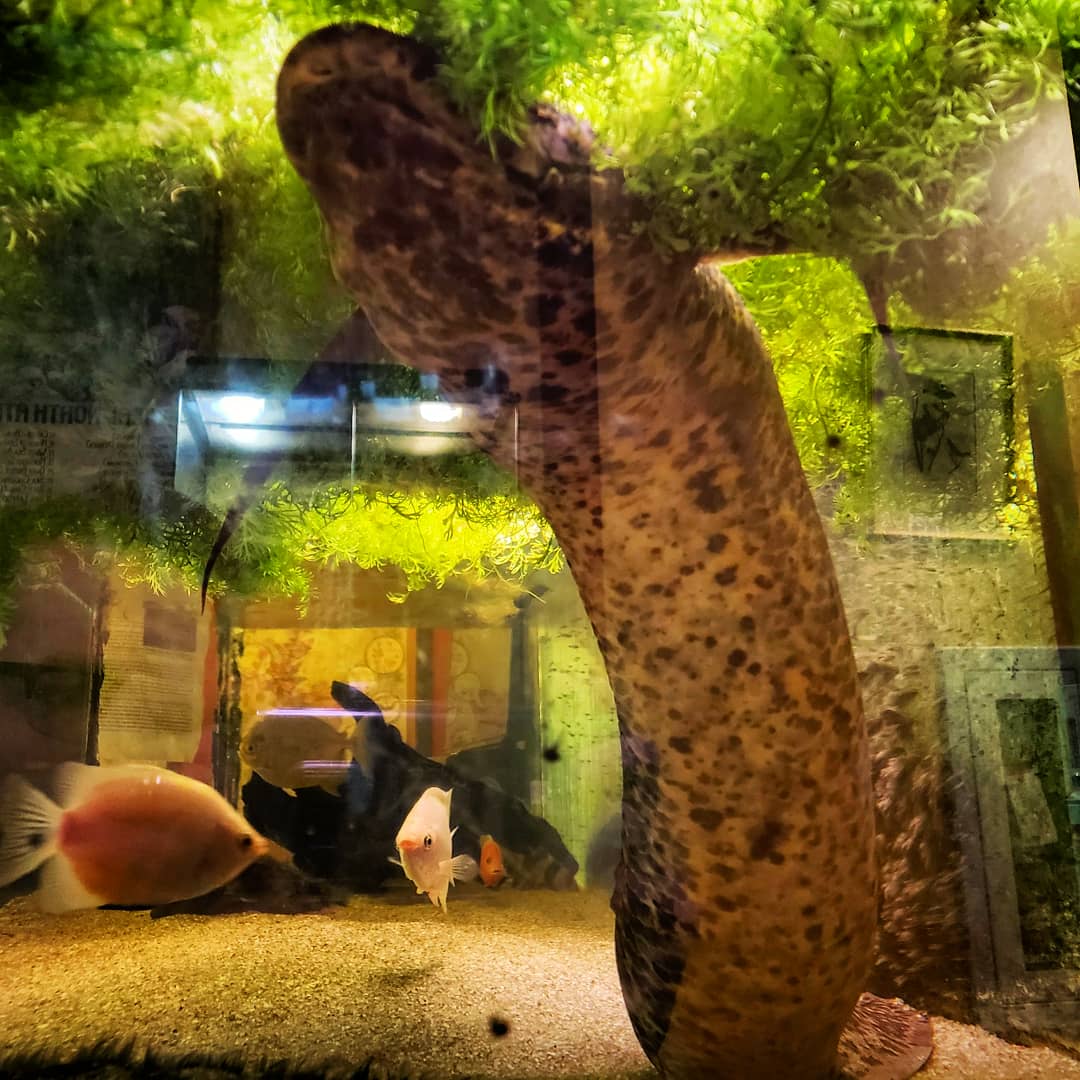Memorial to the Lung Fish, a long-time friend
The Lung Fish at BCC has passed away after living in the Ralph Hoffmann Environmental Center for 18 years - helping students, faculty and guests better appreciate the evolution, zoology and marine biology.
Professor of Environmental Science, Thomas Tyning, offered the following words to describe his long-time friend.
In Memoriam: by Tom Tyning
While raising praise to a fish may seem to some a futile, if not, an unworthy task, it is clear that the passing this past week of the African Lungfish in our big tank at the Hoffmann Environmental Center has touched many.
With more than a dozen names (from Larry and Bob to Lynn and others) our Lungfish attracted constant attention from students, visitors, staff, and faculty. It was just too massive to ignore and its form and function fascinated all who spent just a few minutes staring at it. We will miss him/her – we don’t know how to identify the sexes.
As a bonafide teaching member of our Zoology classes, few animals were more iconic in helping students understand the evolution of vertebrates. On the cusp of air breathing tetrapods, the Lungfish stood poised at the initiation of the transition from water to land. With both gills and lungs, Lungfish are models of evolutionary adaptation and hold a revered place in the study of biology. Known only as fossils to Western science until the first living specimens were discovered in the 1830s, they have captivated scientists ever since. The world’s leading scientists couldn’t agree to what the Lungfish was – a fish, an amphibian, a reptile, or what. Even visitors to Hoffmann assumed, at first, it’s an eel of some sort.


Pictured Above: The African Lung Fish at BCC
Our Lungfish came to us when a former student called me (18 years ago) to say a friend of hers had an aquarium that she was looking to donate. I packed up a current student and we traveled to her house where we discovered the tank was filled and had a single, unusual occupant still inside. Only 6 to 8 inches long, the baby Lungfish had been living with her for a few months. Happily, she gave us the equipment and fish and we returned to Hoffmann to set up a new space. Ever since then, the Lungfish has grown, and grown, and grown. Nearly four feet in length, and at least 20 years old, when it passed, our Lungfish fed mostly on algae pellets with some occasional other food items.
There are a lot of live animals in Hoffmann and all attract attention – but the Lungfish garnered the most fascination, as it should. We will miss its languid character and remarkable form. Perhaps in the near future, we can consider a small memorial fund in which to find a new Lungfish to keep the next two decades of students transfixed.
- Thomas Tyning, Professor of Environmental Science at BCC.
